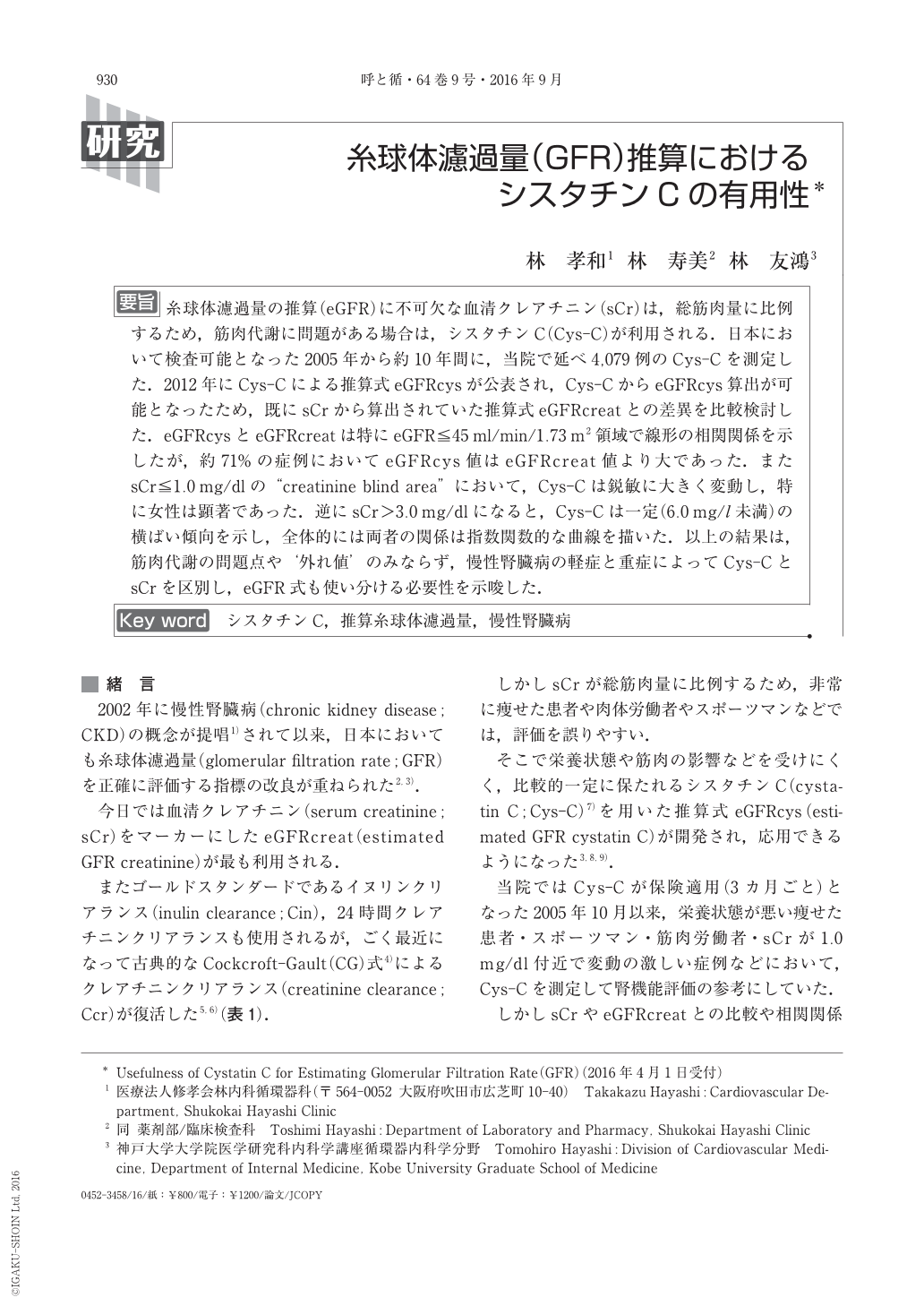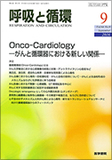Japanese
English
- 有料閲覧
- Abstract 文献概要
- 1ページ目 Look Inside
- 参考文献 Reference
要旨
糸球体濾過量の推算(eGFR)に不可欠な血清クレアチニン(sCr)は,総筋肉量に比例するため,筋肉代謝に問題がある場合は,シスタチンC(Cys-C)が利用される.日本において検査可能となった2005年から約10年間に,当院で延べ4,079例のCys-Cを測定した.2012年にCys-Cによる推算式eGFRcysが公表され,Cys-CからeGFRcys算出が可能となったため,既にsCrから算出されていた推算式eGFRcreatとの差異を比較検討した.eGFRcysとeGFRcreatは特にeGFR≦45ml/min/1.73m2領域で線形の相関関係を示したが,約71%の症例においてeGFRcys値はeGFRcreat値より大であった.またsCr≦1.0mg/dlの“creatinine blind area”において,Cys-Cは鋭敏に大きく変動し,特に女性は顕著であった.逆にsCr>3.0mg/dlになると,Cys-Cは一定(6.0mg/l未満)の横ばい傾向を示し,全体的には両者の関係は指数関数的な曲線を描いた.以上の結果は,筋肉代謝の問題点や‘外れ値’のみならず,慢性腎臓病の軽症と重症によってCys-CとsCrを区別し,eGFR式も使い分ける必要性を示唆した.
Serum creatinine(sCr)is routinely used to calculate the estimated glomerular filtration rate(eGFR), but the values are proportional to muscle mass. Therefore, cystatin C(Cys-C)is used when patients have impaired muscle metabolism. Clinical testing of Cys-C became available in Japan in 2005. We have since been using Cys-C for the assessment of kidney function in our clinic, and have obtained data from 4,079 patents over the approximately 10-year period from 2005 through 2015. In 2012, a cystatin-based GFR equation was proposed, which would allow the cystatin C-based estimated GFR(eGFRcys)to be calculated. In the present study, we compared eGFRcys values with conventional creatinine-based GFR(eGFRcreat)values. The eGFRcys generally showed a linear correlation with eGFRcreat(the linear relationship was apparent especially when eGFR≦45ml/min/1.73m2), and the eGFRcys values were greater than eGFRcreat values in approximately 71% of patients. In addition, the Cys-C values showed a wide range of variation when sCr≦1.0mg/dl(“creatinine blind area”), and this tendency was more prominent in women. Conversely, the Cys-C values tended to remain unchanged(<6.0mg/l)when sCr>3.0mg/dl, indicating an exponential relationship. The results suggested Cys-C to be useful for overcoming the limitations of sCr measurement in patients with impaired muscle metabolism or outlier values. It was also suggested that eGFRcys and eGFRcreat should be used differently, i.e. in accordance with the severity of chronic kidney disease.

Copyright © 2016, Igaku-Shoin Ltd. All rights reserved.


